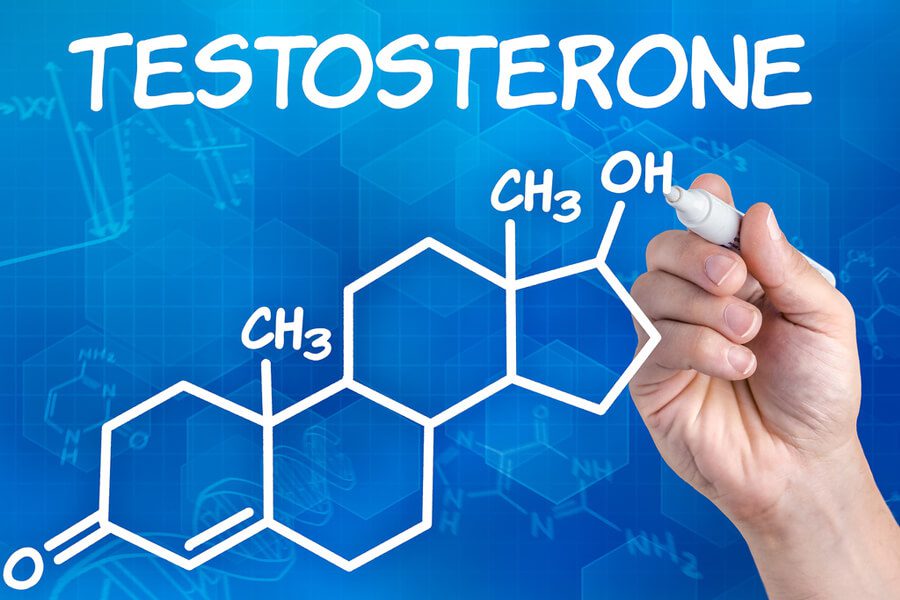High and Low Testosterone in Women

Measurements of testosterone in women are quite important for Dr. Friedman’s patients as it enables him to help distinguish between 2 types of conditions, both of which lead to irregular or absent menses. High testosterone is associated with a condition called polycystic ovarian syndrome (PCOS). Women with PCOS have high total and bioavailable testosterone and irregular periods and often do not ovulate. They also have extra hair growth on their face and acne. This is quite a common condition that is often associated with being overweight and insulin resistance. In PCOS, cortisol secretion is mildly elevated.
Endocrinologists and gynecologists diagnose and treat PCOS differently. Gynecologists look for the cysts of the ovaries and often perform a pelvic ultrasound. Endocrinologists rely more on measurements of testosterone and a high total and bioavailable testosterone is a hallmark of PCOS. According to endocrinologists, PCOS is part of the metabolic syndrome which includes insulin resistance, abnormal lipid measurements, obesity, and high blood pressure. When Dr. Friedman measures the bioavailable testosterone, he gets the measurement of both the total as well as the active form of testosterone, which is the bioavailable form and the sex hormone-binding globulins (SHBG). The bioavailable testosterone is very important to measure in women because the assays for free testosterone are not that good in women, and the bioavailable testosterone, which represents testosterone that can act on tissues, is more easily measured. Additionally, the SHBG being low is a marker of insulin resistance and is probably asgood a measure of insulin resistance as any other test. Dr. Friedman can also measure insulin resistance by measuring a fasting insulin and glucose level, and this can be done in parallel with measuring SHBG.
Once the diagnosis of PCOS is ascertained by elevated bioavailable testosterone levels coupled with low SHBG, as well as symptoms of irregular periods and extra hair growth and acne, Dr. Friedman usually has a two-pronged treatment approach. He uses the drug often used for diabetes, metformin, to improve the insulin resistance. This can often lead to lowering the testosterone to improve irregular periods and extra hair growth and acne. Secondly, he uses antiandrogen drugs to block both the action of testosterone as well the levels of testosterone. These drugs include flutamide, which is a drug that is FDA-approved to treat men with prostate cancer but is quite effective at blocking the actions of testosterone in women. The main side effect of flutamide is an occasional increase in liver function tests, which is reversible, and it is also recommended that women do not get pregnant while taking flutamide. The second drug that could be used to lower testosterone is spironolactone, which blocks both the action of testosterone as well as blocks the action of a hormone called aldosterone. Blocking aldosterone could be beneficial, because spironolactone acts as a diuretic, in which it causes extra fluid retention to be relieved. However, in patients with a low blood pressure the blocking of aldosterone is unfavorable as this could drop the blood pressure. Therefore, Dr. Friedman ofte uses flutamide, which is a more specific drug and has less side effects.
Gynecologists often treat PCOS with birth control pills. Birth control pills are effective in that they decrease the LH and FSH which regulates the testosterone and does lower testosterone. They also increase the SHBG which then leads to a decrease in the bioavailable testosterone. The problem with using birth control pills is that they make it hard to follow the clinical course of PCOS as women get a period on the birth control pills, which is one of the main outcomes you are tracking if you are treating the underlying cause which is the insulin resistance and the elevated testosterone. Birth control pills do affect various liver functions including SHBG, cortisol-binding globulin, and thyroid-binding globulin. Additionally, some birth control pills also have androgenic properties, which means they act like testosterone. Finally, birth control pills lower estrogen as they are often low on estrogen and this may lead to menopausal-like symptoms in women. Therefore, overall, Dr. Friedman tends to use a combination of metformin and flutamide in most patients with PCOS.
Low testosterone is also a problem in women and can be the result of hypopituitarism. Furthermore, Dr. Friedman published a study showing that in Cushing’s syndrome most women have low testosterone, while in PCOS women have higher testosterone. His paper shows that a testosterone level of 30 is able to distinguish PCOS, which usually has a level of above 30, from Cushing’s syndrome, which usually has a testosterone level of less than 30. Since hypopituitarism, Cushing’s syndrome and PCOS all can lead to irregular periods, Dr. Friedman measures the testosterone and specifically, the bioavailable testosterone level, in all women that are having irregular periods. In PCOS, the LH/FSH ratio is often elevated while in Cushing’s syndrome or hypopituitarism, both LH and FSH are usually low.
Because the treatment for PCOS, Cushing’s syndrome and hypopituitarism are quite different, it is very important to make the diagnosis of each condition, which is often aided by measuring the bioavailable and total testosterone.
For more information about Dr. Friedman’s practice or to schedule an appointment, go to www.goodhormonehealth.com.
